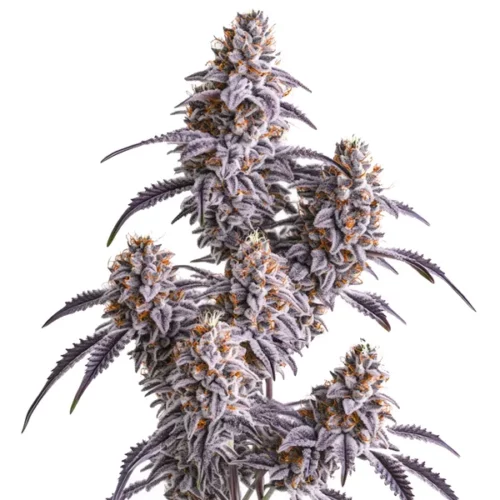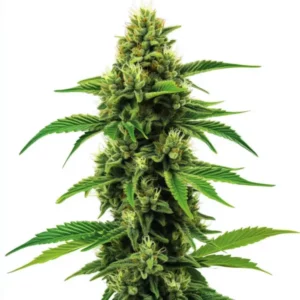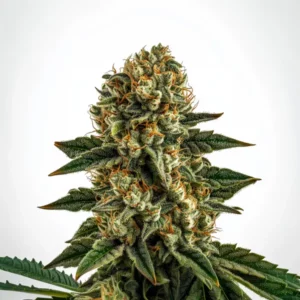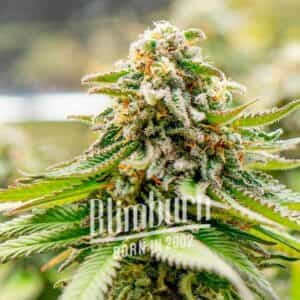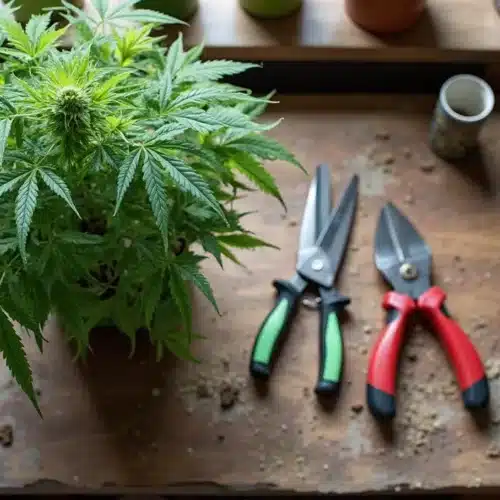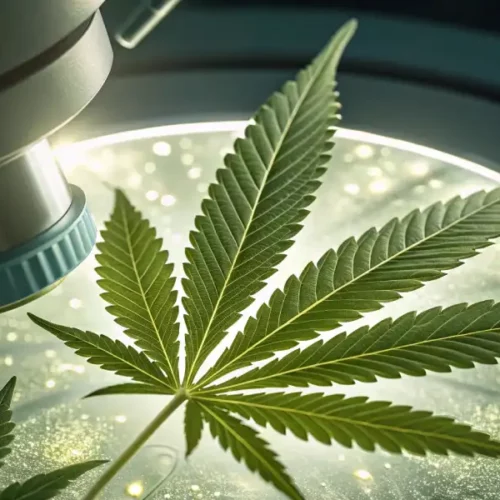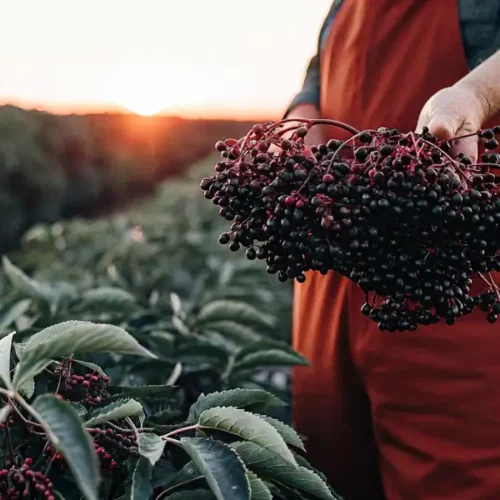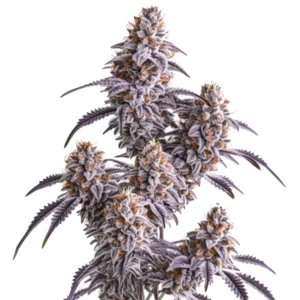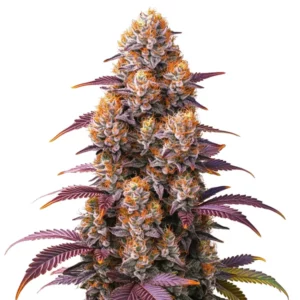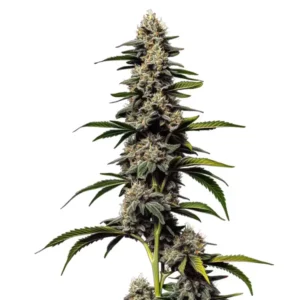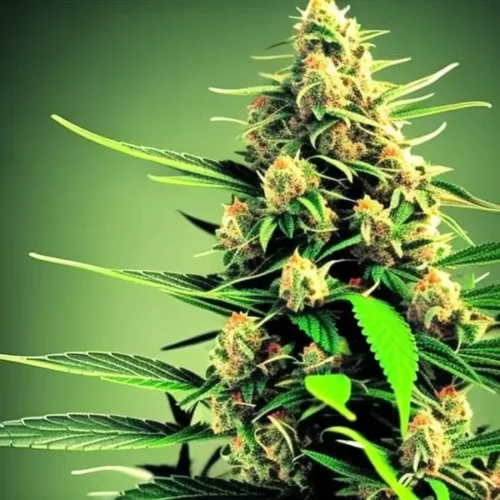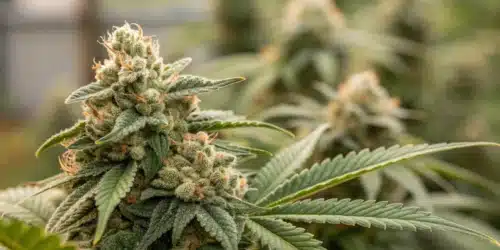If you want to cultivate several plants of the same variety and ensure that they all grow the same with the same organoleptic properties and effects, you have the option of cultivating cuttings (clones) of your favorite plant. This can be achieved because marijuana is a species that can reproduce asexually through clones or cuttings. Cannabis seeds like the ones we sell at Blimburn Seeds are the result of sexual reproduction, giving rise to offspring with stable characteristics (remember that they have traits inherited from their father and mother).
Recommended Strains
Mimosa
 THC: 24 - 30%
THC: 24 - 30% Type of seed: Feminized
Type of seed: Feminized Phenotype: Mostly Sativa
Phenotype: Mostly Sativa Day to flower: 8 - 10 weeks
Day to flower: 8 - 10 weeks
Slurricane
 THC: 24% - 28%
THC: 24% - 28% Type of seed: Feminized
Type of seed: Feminized Phenotype: Mostly Indica
Phenotype: Mostly Indica Day to flower: 8 - 10 weeks
Day to flower: 8 - 10 weeks
Now, it is good to clarify that cloning consists of taking a part of a plant and stimulating its growth until obtaining another independent plant. When we refer to a cutting or clone, we are usually referring to the fact that it is a part of a plant that has been cut and rooted. Although, some gardeners make cuttings during the vegetative stage, taking lateral branches that are beginning to mature, Blimburn Seeds recommends that you make your clones during the early flowering phase (when the plant shows the first pistils) in order to obtain stronger plants, more explosive growth, and higher production.
Advantages of making cannabis clones
1- The cutting process reduces the time between harvests because the time it takes for a cutting to grow and mature is significantly less than that of seeds.
2- Commercial growers as well as home growers have learned to benefit from the cloning weed or cutting method to obtain more crops per year which translates into greater production in the same space at the same time.
3- You don’t need a lot of extra space to have your own mother plants and cuttings. That is, you maximize the cultivation space, obtaining heavier harvests in less time.
4- The low consumption of electricity for the maintenance of the mother plants is also an advantage. A 250-watt energy-saving luminaire or a metal halide bulb of the same power are enough to maintain the necessary mother plants to supply a medium-sized grow room. CFL or fluorescent bulbs are the most economical and simple option to illuminate your room for mothers and cuttings.
5- Keep in mind that Feminized, Fast Version, or Fast Blooming cannabis seeds and also regular genetics are recommended for making clones. Because weed strains are photodependent, their growth and flowering hormone responds to a certain number of light hours. Therefore, and despite the fact that the mother plants you choose are in early flowering, if you put the clones in a light cycle of 16, 18, or 20 hours, you will get the growth hormone to activate and the clone will continue growing. If you select clones when the plant is in the vegetative period, you will not need to worry about the above.
Promos & Deals
More crops in less time
With the following hack, we are going to teach you how to harvest more plants from clones in less time. To harvest more plants from clones, you must combine flowering and harvest cycles of 8 weeks with an easy cutting system. That is, you must give it 2 months of flowering.
A simple method consists of rooting 5 cuttings every 10 days and harvesting 1 or 2 mature plants on the day. Following the cycle periodically, we ensure a harvest of 4 or 5 plants every 10 days, making the most of the space. A 60 x 60 cm mini cabinet will be more than enough to fill another 2 x 2 meter cabinet with buds. With 3 or 4 mother plants, you can keep your favorite cannabis genetics practically forever.
Necessary inputs to make cannabis clones
A- Mother plant. In order to take cuttings from a plant that starts from seed, it must be an adult. The cuttings inherit all the characteristics of the mother plant, so you must ensure that the mothers from which you are going to obtain the cuttings do not have insect pests or fungi, in addition to showing a healthy appearance if you want your clones to prosper.
B- Sharp scissors. Preferably straight-tipped scissors to make a precise cut.
C- Rooting substrate such as jiffis and rockwool to plant the cuttings.
D- Rooting hormones, gel or liquid.
E- Pharmacy alcohol to disinfect the cutting elements.
F- Latex, nitrile gloves, etc. In order not to spread possible viruses or infections to the plant.
G- Container to store the clones, preferably a greenhouse.
H- Light. Low consumption lamps such as the 2x55w lighting fixture (to cover 1/2 m2), or the 4x55w lighting fixture (to cover 1 m2) are ideal.
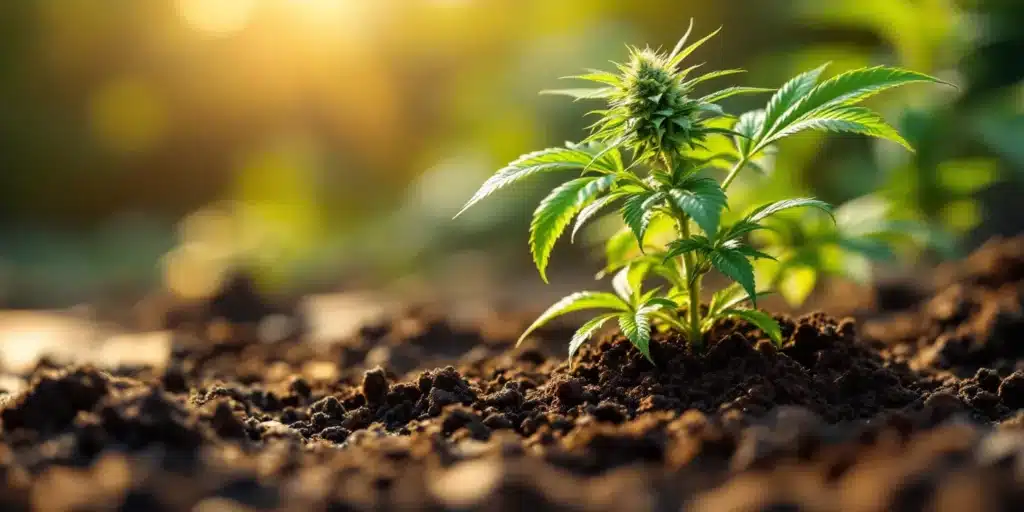
How to make cannabis clones: step by step
Now, we are going to teach you how to make cannabis clones in the simplest and most effective way possible. Pay attention to each of the steps that we show you so you can obtain the best weed clones for cultivation.
1- The first thing you should take into account is choosing the variety that best suits your tastes and that is also an appropriate variety for the cutting. Once you have the chosen variety, it will be time to germinate the weed seeds from which you will get the mother plant. To create a strong and robust mother plant that allows us to take cuttings, you must bear in mind that the older and more mature the mother is, the better quality and regularity her cuttings will offer us.
2- Enable a disinfected and spacious work area where we can deposit all the utensils that we will use. Remember that the area must be 100% clean to prevent the clones from being infected with fungi or pests that can kill the cutting or damage it, preventing its optimal development.
3- Prepare the propagation tray or the plastic cups that you use to put the branches in that are extracted from the plants that will become the clones. If you use rockwool, jiffis, or coconut to root the clones, we suggest you moisten this area so that the clone can hydrate and stay alive.
To properly hydrate the medium where the clones are going to be cultivated such as Jiffys, they must be soaked in warm running water for 10 minutes (if possible with a pH of 5.5). If it is rockwool cubes, you must take the precaution of soaking them in water with PH 4.5 and a little rooting fertilizer (up to 0.60 EC) for 24 hours. If you make them with soil, limit yourselves to filling the pots or alveoli and hydrating the substrate a little with a light watering.
4- At this point, proceed to cut the cuttings from the mother plant. Preferably, we will use only the apical buds or tips. Try to keep at least one knot of the cutting from its lower part buried once you plant the cutting (so we will have removed the bud and the leaves with the scalpel or scissors). Then, cut the tips of the leaves to avoid dehydration and leave them in a container with running water.
It is also necessary to cut the leaves of the cutting in half or at 45°. This way, the transpiration surface is reduced, keeping metabolic activity low while hormonal changes occur. By not having roots, there is almost no water absorption, so the plant has to hydrate and nourish itself from the leaves.
5- Experts recommend that you remove the first green skin from the branch/clone that is obtained from the mother cannabis plant. It is that area that must be smeared with the hormones that are used for the clone to produce roots. This process is simple but it must be done carefully, so we recommend using a wooden stick such as an unused ice cream stick. Taking the stick, you must spread the hormones (we recommend using those hormones in gel format) and then pass it and soak the branch/clone in the area where you removed its green cover.
If you use liquid rooting hormones, you will need to dip the bottom of the already cut cuttings into the liquid hormones, wait about 10-20 seconds, wet the bottom with water, and plant the cuttings in the jiffys or plugs of wool stone.
6- Once you have the branches soaked in the hormones, proceed to put them in the jiffys or in the container glasses with rockwool or the substrate that you use. It is necessary that the medium in which you begin to cultivate the cuttings have a constant humidity and a good temperature in order to stimulate the rooting of the clone.
7- When the cuttings are already in their cultivation medium, leave them inside the cloner which you can buy at any grow store or you can also use a large plastic container with a transparent lid as a cloner and it will fulfill the same function of preserving humidity and temperature to stimulate clone development. It is also important to give the clones a constant light cycle of at least 18 hours of light so that the growth hormone is activated and allow them to develop.
8- An important detail is that you must have a high humidity in the greenhouse of the cuttings so that the jiffy, the rock wool, or the substrate do not dry out. You must also ensure that the air is renewed. To achieve this, you must open the greenhouse every day to renew the air and provide oxygen to the plants. The cuttings take root in an average of 7-15 days, so you should observe the state and evolution of the roots every day. Once you see the first roots appear, you can transplant your cuttings into pots with soil or coconut or put them in hydroponics systems to grow.
9- Since you already have the clones in the process of rooting in their incubator or mini-greenhouse, you can start giving them lighting which, as we pointed out in the previous point about supplies, does not require a lot of power. Otherwise, if you already have a crop of large plants, you can put the cuttings incubator under the lighting in your indoor grow in an area that can preferably be in the lateral areas or under the branches and leaves of the largest plants. With this trick, you make sure that the cuttings receive the light they need but are not damaged by light stress or excessive heat.
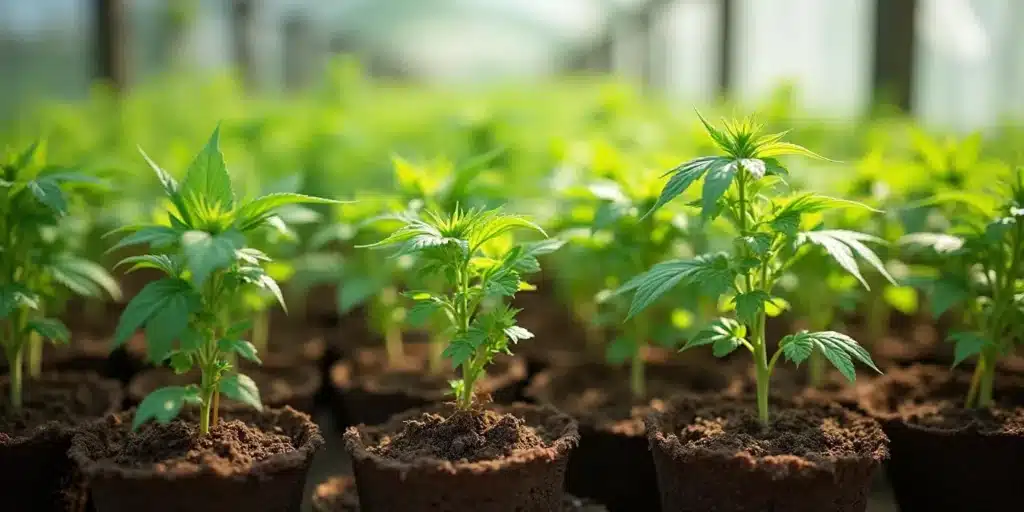
Which cannabis strain to choose to make weed clones?
Perhaps you still don’t know that there are varieties that are easier to clone and that there are also genetics that are easier to breed from a clone. Well, now you will know which varieties of weed can facilitate your cultivation and maximize the harvests in each cycle in your indoor or outdoor cultivation.
Mimosa
Mimosa is a mostly sativa variety that is easy to grow and also very easy to clone so you can grow monocultures only with this variety indoors or outdoors. Today, this weed strain is one of the most sold in clone format in stores in the United States thanks to its tremendous popularity as well as the super heavy yields it delivers. Indoors, you can collect up to 2.29oz/m2 and outdoors, the harvests are between 21-28 oz/plant which is an incredible amount of buds for a single plant.
However, not only does Mimosa stand out because of its extreme potency which is between 24%-30% THC, but also for its delicious flavors that are a mixture of orange with notes of pine and strong citrus aftertastes with hints of of sweetness that permeate in the mouth and flow with each puff when you release the smoke through your nose. All of this is possible thanks to the fact that Mimosa is a cross between the incredible Purple Punch x Clementine, two strains that provide vigorous and strong plants with high production of exquisite buds with high levels of THC.
Slurricane
The feminized weed seeds of the Slurricane genetics are amazing as this mostly indica strain has incredible THC levels, ranging from 24%-28%. On the other hand, this strain is also easy to clone and its cuttings are among the best sellers in Canada and the United States, especially among gardeners and stoners who prefer indica cannabis strains for their intense effects.
With each smoke of Slurricane, you will go on a trip of an intense high that is very energetic and will provide you with a wonderful euphoria. However, be careful because if you exceed the levels of consumption, it will plunge you into an intense relaxation that is very deep. Here at Blimburn, you can buy feminized Slurricane seeds with guaranteed quality and have an incredible garden from which you will be able to get all the clones you want.
Somango
Somango is an ideal variety for making clones because it delivers cuttings that adapt very well to dry and hot climates and also to more humid and temperate places such as areas with a continental climate. If you grow in sectors with a more tropical climate with high humidity and high temperatures, we recommend Somango. Always make sure to take care of it so that it is not affected by powdery mildew or mold. It is necessary to carry out daily analyses of the specimens in the garden.
Somango stays on your palate as it delivers incense flavors with fruity notes and a notorious Mango aftertaste. You will feel like you’re floating while focused on your daily tasks with a notorious feeling of happiness. At the end, you will immerse yourself in a delicious relaxation thanks to the power it has which is between 16%-21% THC. If you are worried about producing heavy yields, with Somango clones, you are going to get incredible yields between 1.15-1.47 g/m2 indoors and outdoors, you get a magnificent 35-70 oz/plant.


